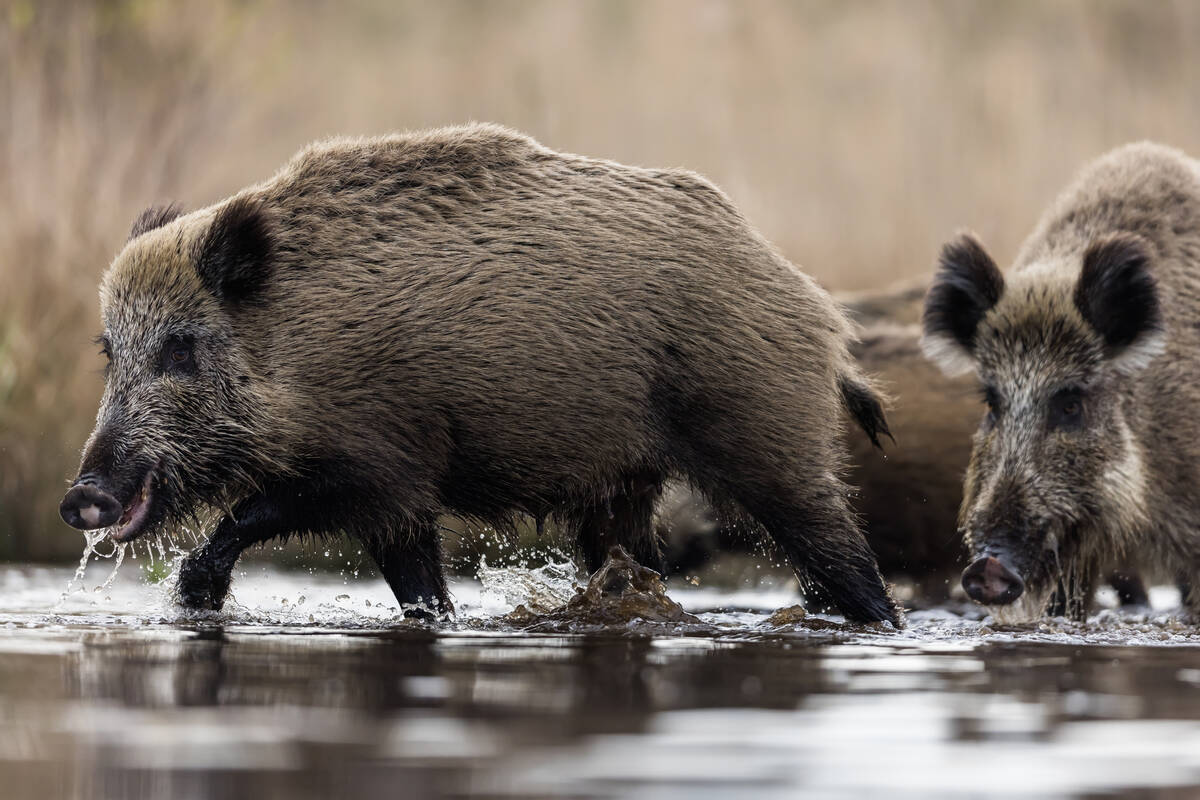The epidemic saw turkeys and chickens in Canada and the U.S. infected, flocks destroyed and borders closed to trade
RED DEER — Diligent biosecurity could save poultry farmers from the devastating effects of avian influenza.
The virus comes in different forms, but a highly pathogenic strain killed millions of laying hens and turkeys in the United States in the first half of last year, making it the worst animal disease epidemic in that country’s history.
“The producers were prepared for a tornado. What happened was a tsunami,” said Helen Wojcinski, a poultry veterinarian with the Hendrix Genetics breeding company who focuses on turkeys and animal welfare.
Read Also

Manitoba bans wild boar possession
Manitoba has tightened the regulatory status of Eurasian wild boar in an effort to help fight back against invasive wild pigs.
“This virus was quite different. Instead of that single point introduction, we had simultaneous hits in large areas. The resources to deal with the control of it became very limited and became exhausted very quickly.”
The disease ran out of control and producers in 15 states had to reassess biosecurity once they realized how many pathways the virus took on its way to infecting 10 million turkeys and 40 million layers from December 2014 to June 2015.
Eighteen trading partners banned U.S. poultry, which resulted in serious consequences for meat and breeding stock exporters.
Many infected farms were family owned operations, and they ended up with significant cash flow problems because they could not do business for three months after the disease had cleared.
As well, five million hatching turkey eggs were imported from Europe because the breeding birds had been lost. Eggs also came in from Canada, which left hatcheries in a tight position.
“When you get a disease challenge, you have to look back and say, why did this happen and what caused it. What am I willing to do to stop it from happening again,” Wojcinski told the Western Poultry Conference in Red Deer Feb. 29.
Biosecurity had to be taken seriously. Education about the virus and its transmission was important because many thought it blew in on the wind and that nothing could stop it.
There are two forms of the virus:
- Highly pathogenic avian influenza (HPAI) causes severe disease in chickens and up to 100 percent mortality.
- Low pathogenic avian influenza (LPAI) causes mild disease, and few birds die.
A low pathogenic form that is allowed to circulate multiple times in a flock with no clinical signs could turn into something much worse.
“The more times it goes through a susceptible population, it will start to mutate, and it will take on the ability to take on the highly pathogenic form,” she said.
The virus is considered a foreign animal disease, and birds are destroyed if discovered on a farm. The disease was so virulent in some cases that birds died before they could be euthanized.
It is suspected that waterfowl from multiple global flyways congregated during the summer of 2014 in northern Russia and carried the H5N8 HPAI viruses south into North America, Europe and East Asia.
It does not affect wild birds in the same way, and they can carry it without symptoms.
Disease occurred in every migratory flyway but the Atlantic flyway.
The birds carrying the virus landed on crops and open water, where they passed the virus in their excretions. The virus can survive in cool conditions and is easily transported.
It was determined that equipment and people played a major role in the outbreak. It rode in on dust, feathers, manure and crop debris.
Farms shared feed trucks, live haul loaders and pre-loaders and spread the disease. People walking in fields and farmyards carried it on their shoes and clothes.
Wild birds such as sparrows and starlings may also spread it, and rats and mice could root around dead piles and carry the infection.
U.S. Department of Agriculture officials took samples inside and outside barns at the height of the infection and found positive samples 150 metres to a kilometre away from infected barns.
“You have to think outside the barn is a dirty contaminated area. What measures are you going to take to make sure you don’t drag the outside inside of the barn?” Wojcinski said.
“It is not just the biosecurity on your farm. It then becomes a matter of what your neighbours are doing.”
Workers had to wear hair nets and clean coveralls and change dirty clothes before entering a barn and trucks and other equipment had to be washed thoroughly.
For example, five turkey farms in a single area used the same rendering company and all became affected within a 10 day period.
Most outbreaks started on Thursdays, and officials eventually realized that was because many large farms didn’t supervise their workers on the weekends, which meant sanitation rules weren’t followed.
A vaccine was developed, but the USDA’s Animal and Plant Health Inspection Service ruled it would be allowed only if absolutely necessary to eradicate the disease. Trading partners argue the disease is not under control if vaccination is used, so they will not accept product while the process is underway.
Vaccination will reduce shedding, but will not prevent the disease.
Avian influenza is a reportable disease in Canada, and all cases must be reported to the Canadian Food Inspection Agency.
Alberta poultry groups are invited to join a March 24 conference call on avian influenza. The call is from 10-11 a.m. and will discuss the current level of risk in North America, symptoms and what to do if a flock is sick.
The toll free number is 888-886-7786.















